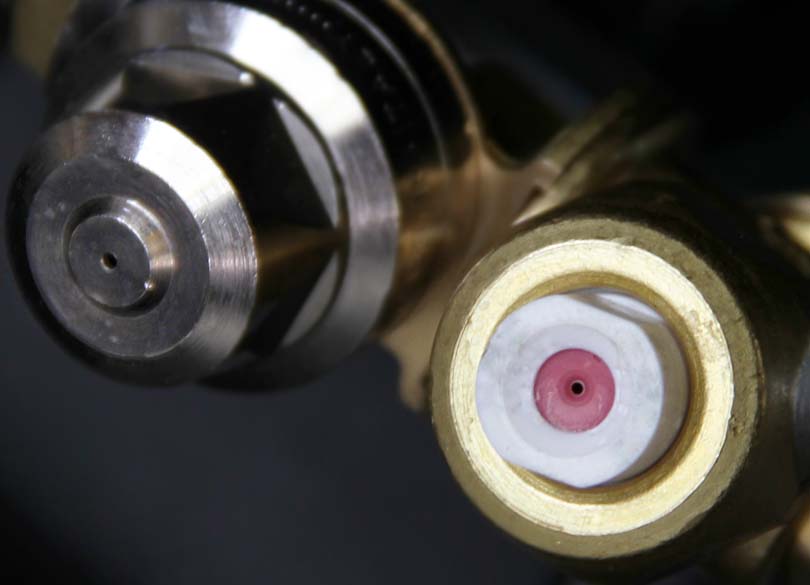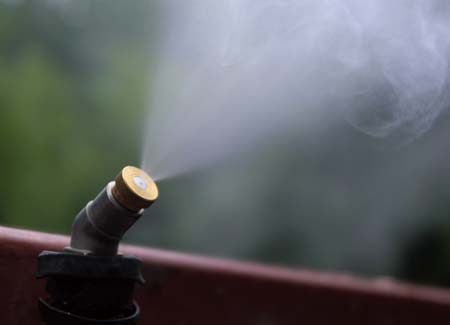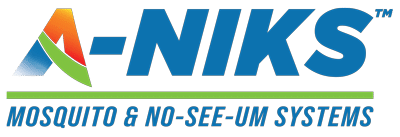
Engineering a Mosquito Misting System
Summary
Mosquito misting system engineering is the core specialty of A-Niks. Misting systems are the most effective solution on the market for controlling mosquito populations at a local level (backyard or commercial property). This innovative technology is designed to provide consistent and efficient pest control, significantly reducing the population of mosquitoes and other nuisance insects in residential and commercial micro-areas.
The system operates by dispersing a fine mist of insecticide, typically pyrethrin or permethrin, at predetermined intervals throughout the day. The misting nozzles are strategically installed around the perimeter of a property, focusing on areas where mosquitoes and other pests are most likely to breed and congregate.
The engineering behind these systems is intricate, involving precise calibration to ensure optimal dispersion of the insecticide, while minimizing environmental impact. The systems can be programmed to mist at specific times, typically dawn and dusk when mosquitoes are most active, providing round-the-clock protection.
Mosquito Control: a necessity in Florida
Over the past 30 years, our state of Florida has been the theater of several episodes of mosquito-borne disease outbreaks. There are 4 types of disease that mosquito can carry:
- Malaria: This life-threatening disease is caused by the Plasmodium parasite, which is transmitted to humans through the bite of infected female Anopheles mosquitoes. Florida has a large population of these.
- Dengue Fever: Dengue is a viral infection transmitted by Aedes mosquitoes. It can lead to severe flu-like symptoms, and in some cases, it can progress to dengue hemorrhagic fever, which is potentially fatal. There was a brief outbreak fo Dengue fever in Florida a few years ago.
- Zika Virus: Zika virus is primarily transmitted to humans through the bite of infected Aedes mosquitoes. In pregnant women, it can cause birth defects and neurological disorders in newborns. We also had a brief outbreak of the Zika virus in Florida.
- West Nile Fever: West Nile virus is transmitted to humans through the bite of infected mosquitoes, primarily those belonging to the Culex species. Most infected individuals experience mild or no symptoms, but it can cause severe neurologic illness in some cases. There was an outbreak of West Nile virus over 10 years ago in Florida, and we are still monitoring the growth of the Culex population.
Given that mosquitoes breed in stagnant water and thrive in warm and humid environments (typical of our state), traditional methods like using mosquito nets and repellents provide temporary relief but are definitely not long-term solutions.
Spraying is effective, but it has to be done often, and its effects do not last long. Beside, spraying is often done using synthetic insecticides and these kill indistinctly bad mosquitoes and friendly insects — which is not an ideal situation when we are trying to foster a friendly eco-system for bees, for example.
By comparison, well-engineered mosquito misting systems help control and reduce the population of mosquitoes, while decreasing the quantity of insecticides pumped into the environment, and protecting non-target insects when used in conjunction with natural insecticides. This is the reasn why A-Niks has worked for years to develop innovative nozzles and other technological features to create more efficient mosquito misting systems.
The engineering of a mosquito misting system
Mosquito misting systems are simply more effective than traditional spraying methods at controlling mosquito populations in outdoor spaces, both residential and commercial. They will also protect beneficial insects better when they are well designed, correctly installed, and used with the proper type of insecticide. A-Niks uses a combination of sound engineering principles and proprietary technical components to deliver insecticides in a very fine mist, targeting mosquitoes and other flying insects. How will we engineer a custom mosquito misting system?
Components of a Mosquito Misting System
A mosquito misting system comprises several essential components that work together to deliver insecticide effectively. These components include:
 Nozzles: The nozzles are strategically placed around the perimeter of the outdoor space and are responsible for releasing the insecticide solution as a fine mist. Nozzles are typically designed with anti-drip features to prevent unwanted dripping of the insecticide when the system is not in operation.
Nozzles: The nozzles are strategically placed around the perimeter of the outdoor space and are responsible for releasing the insecticide solution as a fine mist. Nozzles are typically designed with anti-drip features to prevent unwanted dripping of the insecticide when the system is not in operation.Mechanical Functioning of a Mosquito Misting System
 Atomization and Misting: When the insecticide solution reaches the nozzles, it is released as a fine mist through a small orifice. This process, called atomization, breaks the liquid into tiny droplets that can be easily carried by air currents. The mist’s droplet size is crucial for effective mosquito control, as smaller droplets are more likely to come into contact with flying insects while minimizing the risk of drift and exposure to non-target organisms.
Atomization and Misting: When the insecticide solution reaches the nozzles, it is released as a fine mist through a small orifice. This process, called atomization, breaks the liquid into tiny droplets that can be easily carried by air currents. The mist’s droplet size is crucial for effective mosquito control, as smaller droplets are more likely to come into contact with flying insects while minimizing the risk of drift and exposure to non-target organisms.A-Niks: Can We Engineer Your Mosquito Misting System?
A-Niks specialized early on in designing, engineering, installing and maintaining high-efficiency mosquito misting systems. We know these systems give homeowners a better protection against mosquitoes than traditional straying methods, and our own systems are designed to protect life (beneficial insects). We even developed a proprietary natural insecticide based on essential oils: it preserves your environment, and helps enhance your quality of life.
If you want a new freedom with more of your time spent outdoors, or if you operate a resort and need a mosquito misting system to ensure your guests are comfortable, call us to receive a free estimate after we look at your property. We will custom-engineer a mosquito misting system that is tailored to fit the characteristics of your estate.
Discover our other services and products
A-Niks is a division of Lyfe Outdoor Comfort Solutions, America’s #1 provider of outdoor comfort products suitable for Florida. We offer a comprehensive line of mosquito misting systems and pest control services, patio cooling systems, and outdoor shade & structures to help you enjoy more time outdoors.


